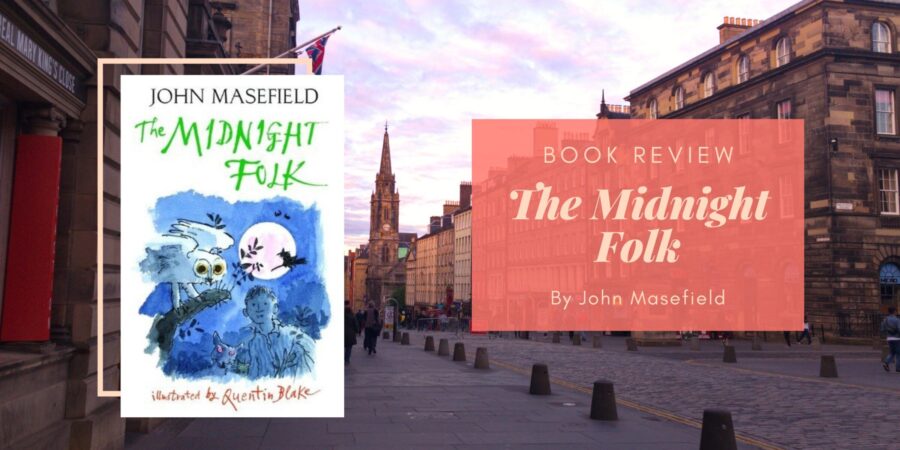I can’t quite remember how I heard about John Masefield (probably from a book about fantasy), but I’ve had The Midnight Folk on my TBR for quite a while, making it another good Wyrd & Wonder book to read.
Written in 1927, almost a century ago, The Midnight Folk is a dreamlike tale about the search for lost treasure. Kay Harker lives a quiet, cosseted life but when his great-grandfather steps out of a painting and charges him to look for the lost treasure so that they can return it to its rightful owners, Kay embarks on a fantastical journey with witches, paintings that come alive, and many magical animals that either help or hinder him.
The most notable feature of this book is that it doesn’t have any chapter or section breaks at all. This makes it feel like one long dream, even though we know that several days pass from the start of the adventure to the end. Once the magic starts, it stays through the night and into the day, and the unbroken nature of the text enhances the fantastical mood of the story.
Kay was an interesting protagonist and I’m not sure whether I like him or not. I know children are supposed to be more open to the world being unlike it appears, but he has absolutely no qualms about all this magic happening. Kay takes everything in stride, sometimes to an unrealistic degree. He also seems to be a rather passive protagonist – while he sometimes takes action during the day, at night he seems to be happy to let whoever he meets bring him on a seemingly unrelated adventure. He is, I think, the story’s weakest link – while my first impression of him was positive, given how unintentionally funny he was thinking about his schoolwork, he also doesn’t seem to drive the story forward and I had a hard time seeing why he was the one chosen to find the treasure.
If Kay is the weakest part of the book, then the worldbuilding is the strongest. Masefield includes a variety of magical creatures in the story – water rates in paintings, talking cats (both good and bad), as well as witches and ghostly people. All this adds up to a fascinating world and I can see how this might have influenced other fantasy writers; paintings coming to life is perhaps the most obvious one as it reminded me of The Voyage of the Dawn Treader in The Chronicles of Narnia.
Overall, this was an interesting book. The form is innovative and the worldbuilding is creative. However, I think the dreamlike quality of the book made Kay a bit too passive (things tend to happen to him rather than the other way around) and detracted from the fun of the book.
